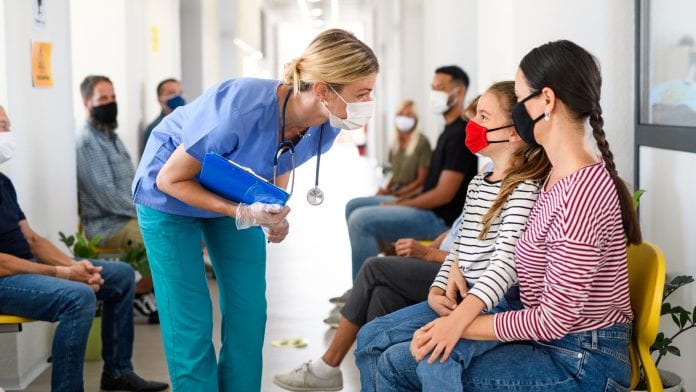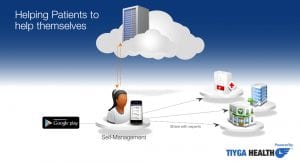
Katrina Delargy of TIYGA Health outlines the challenges posed by growing waiting lists in healthcare.
Patients need patience. They need to wait for their appointment with doctor and for treatments – they wait for a diagnosis, or just a specialist opinion. Waiting is an inevitable fact, unless they are rushed in for emergency care. Delays and waiting are an unfortunate consequence of the overstretched system, unless the person has private healthcare with a rapid response guarantee. Delays sometimes allow people time to prepare themselves for whatever lies ahead, but when delays are too long they contribute to the stress and anguish of waiting for diagnosis and treatment, which themselves may exacerbate the problem. It is rare for health problems to get better while waiting.
We must truly reflect on the consequence of delays at the present time, when the COVID-19 pandemic has caused many treatments and consultations to be postponed. Waiting lists have extended unimaginably and people must wait even longer for diagnosis and treatments.
Yet 2020 was the year when real-time data and health statistics became part of daily news bulletins and everyday life. So how can digital technology be a positive intervention and help reduce waiting lists or make them more bearable?
Waiting times increased due to COVID-19
Almost 10 million people in the UK are now waiting for elective surgical procedures, up from four million before the pandemic started. Among them are nearly 100,000 patients whose joint replacement surgeries were cancelled during the first COVID-19 wave, many of whom are still struggling with daily activities because of severe pain and limited mobility. By September 2020, nearly 140,000 patients in England had been waiting for more than a year for their surgeries – 100 times the number for 2019. The US has a potential backlog of more than one million joint and spinal surgeries by mid-2022.
It will take many years to measure the true impact of delayed joint replacement surgeries, from a personal basis as well as a macroeconomic and political perspective. We accept such cases may not represent an immediate life-or-death situation, but the suffering of these patients cannot be ignored. Delaying surgery in patients with the most severe disease can lead to more complicated surgeries, increased use of medications, longer recoveries, and worse outcomes, including increased rates of revision surgery and reduced quality of life.
In July 2020, the Royal College of Surgeons of England said that what they described in Spring 2020 as a ‘time bomb’ under surgical waiting lists had ‘already detonated’, and called for a ‘plan for recovery’. By August, it was described as a ‘wrecking ball’ for targets for timely treatment.
Macmillan analysis has found that there are 50,000 people now who have not yet had a cancer diagnosis and who are at risk of becoming the forgotten ‘C’ of the coronavirus crisis. The rise in cancer patients not being treated due to COVID-19 concerns has been described in April 2021 as a ‘ticking time bomb’, with 350,000 patients not referred to hospital.
The importance of timely treatment cannot be underestimated.
Getting a diagnosis
Diagnostic delay is the time interval between the onset of symptoms and confirmed diagnosis of a disease. For a variety of reasons, including the mitigation of disease severity and financial expense, it is desirable for this delay to be minimised. The importance of reducing diagnostic delay varies between diseases.
Patients who experience diagnostic delay in treatment of colorectal cancer often have a higher number of consultations and medical tests and are sometimes given suboptimal care (for example, if their symptoms were initially associated with a disease other than colorectal cancer); and the effect of these experiences on psychological outcomes among both patients and family members remains underexplored.
For many complex diseases which affect multiple body systems, such as myalgic encephalomyelitis or fibromyalgia, people have reported waiting five or seven years to get a diagnosis. Now, with over a million people diagnosed with long COVID-19, or post-viral syndrome, which also affects many body systems, we need to ask: in the current climate, is a swift treatment going to be realistic?
The average time to diagnosis for patients with rare diseases is 7.6 years in the United States, and the average number of doctors they see before being correctly diagnosed is eight. A quick search shows many articles by legal firms on the consequences of such delays. Some delays are purely administrative, a matter of scheduling and resource scarcity; but other delays are related to the nature of the symptoms, and the difficulty in getting the right data about them and getting them referred to the right speciality.
As digital technology is underpinning progress, there must be a more efficient and effective way to improve clinical outcomes. TIYGA Health is working with primary and secondary care to explore how real-time data, captured by patients, using consumer technology can improve the patient journey and the dataflow to give specialists an enriched picture of recent history. Could we triage patients earlier and fast-track those most able to benefit from interventions?

Real-time data and engaging patients
Now that patients have become much more aware of using technology during COVID-19, for example in teleconsultations, there must be an opportunity to improve the reporting of symptoms in ways that help clinical specialists to reach a diagnosis sooner.
Those diseases that are characterised by highly specific symptoms and can be detected via blood tests and scans usually have a quicker diagnosis than others. When the symptoms are hard to describe, vary a lot in location or intensity, and particularly where they are highly subjective in description, it is harder for healthcare professionals to get a consistent picture of what is happening. For these, there is greater reliance on self-reporting and accurate recall and patients often have to repeat their story many times. New digital technologies allow patients with COVID-19 to start reporting such observations in a structured way outside clinical settings. Some symptoms or observations could be due to minor everyday causes and can be self-managed without much need for clinical treatment; perhaps there is a clear connection to some underlying mechanism of aggravation or deterioration. With long COVID-19, it is especially important to collect multiple data to gain a comprehensive history from patients as some may have organ damage. Connected patient diaries such as TIYGA™ can help patients to see patterns and act sooner.
Many healthcare systems rely on segmented specialisms and patients may find themselves being referred from specialist to specialist, subjected to test after test, yet often not sure if their symptoms are believed, or indeed their comments are taken seriously.
The question is – how can patients be more proactive and accurate in the data gathering process? Could a more systematic way of data collection help? Traditionally, patient-generated records were highly individual in nature and healthcare professionals did not have time to interpret them. With technology-based diaries, can advanced analytical techniques see patterns that might take several consultations to detect?
During the COVID-19 pandemic the UK government has placed importance on making plans based on ‘data, not dates’. 2020 has shown us the importance of getting the right data from and about patients, in near real time. We try to find out about new variants early enough to take action; we know that even asymptomatic people should be tested for COVID-19. We know we cannot wait for hospitalisation and death data before responding and intervening. Precision medicine focuses on prediction, prevention or pre-emption and personalisation. A pre-emptive health system makes small, early, constant and low-resource interventions.
The point here is that most serious illnesses develop over time, they usually do not suddenly occur overnight. The process normally starts small, at molecular or cell level, and it is only detected after a period of growth or spread. We can often see that the signs were there earlier: a cough, difficulty swallowing, hiccupping or a hoarse voice could all be signs of oesophageal cancer, and because of their seeming triviality, the initial symptoms are often ignored with dire consequences.
Physicians report that they frequently do not have the necessary time to spend with patients, or that their clinics are too rushed. Ideally, patients would be inputting their own data while waiting for their referral date, giving a more detailed and accurate history of the problem being investigated. Patients are often willing to be engaged in self-monitoring and recording changes in their own experiences.
Families of people with rare diseases often dedicate huge amounts of energy, time and resources to their own research – and to seeking information from others who have had similar experiences. Sometimes they arrive at a diagnosis before the specialist, who knows about many diseases and has to care for many patients. Usually, patients’ families have only one case to focus on. They invest their time and get results despite no formal training on the topic.
Again, time is a theme. That is where technology can help, consumer devices and smart analytics can allow more detailed data to be captured, visualised by the patients and families in near real time and analysed to help the professionals to make sense of complex diseases and comorbidities.
The legacy of COVID-19
The tragic legacy of COVID-19 is that many lives have been lost or changed forever, whether through death, long COVID, loss of livelihood, delayed surgery or diagnosis and much more. The more positive side includes the acceleration of vaccine development, increased focus on public health and hygiene and the reduction in unnecessary travel. The increased awareness of consumers as patients, or potential patients, on self-management and self-monitoring – looking at the success of data collection we can see that people can and will engage with tests on a more regular basis than previously would have been imagined. We now have school children doing lateral flow tests before going back to school and on a regular basis thereafter.
Our society has acquired a new insight and language of epidemiology, some new awareness of personal habits and risks and a new confidence in self-checks for the benefit of others. People have become much more aware of the importance of early recognition of signs and symptoms by checking their temperature, their oxygen saturation, changes in taste and smell, a new cough, lasting fatigue, difficulty in thinking clearly (brain fog) and more. They have learned to look for early signs, to take a test to check, and to report their symptom status via apps.
This creates an opportunity to become a more proactive society, taking more responsibility for early intervention – more comfortable looking at timelines to see what is under control. Now it is time to take those positive steps towards full engagement in the digitally enabled process to support people on their journey to diagnosis, make their wait for treatment feel more productive, and help them to see the right person at the right time and in the right place. Using digital tools, such as TIYGA apps, people will tell their story once and get self-management support while waiting for treatment. In this way, specialist time will be freed up rather than wasted; and some waiting times will be reduced.
Time is our greatest asset – and patients should not need so much patience.
Katrina Delargy
Managing Director
TIYGA Health
www.tiygahealth.eu
This article is from issue 17 of Health Europa. Click here to get your free subscription today.

























